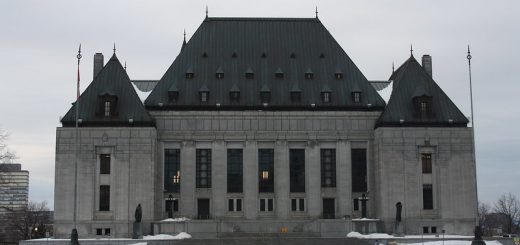Gyorffy v Drury: Big Win or Big Chill for Plaintiffs?
Writing for the Ontario Court of Appeal (“ONCA”) in Gyorffy v Drury, 2015 ONCA 31, Justice Laskin upheld an award of non-pecuniary damages for injuries arising from a motor vehicle accident (“MVA”). The case hinged upon whether the Plaintiff was permitted to corroborate his own physician’s evidence on his changed functioning after the accident. At trial, it was determined that the Insurance Act, RSO 1990, c I.8 (“the Act”), required the Plaintiff to meet an onerous standard of proof such that the Plaintiff could not corroborate his own physician’s evidence. Accordingly, the trial judge found that the Plaintiff had not met the evidentiary threshold set out in the Act and denied any award of non-pecuniary damages.
Both Ontario’s Divisional Court and Court of Appeal reversed the trial judge’s decision, finding that the Act did not impose such onerous standards as the trial judge had found.
The Court of Appeal’s adoption of a less onerous threshold may be taken as a positive development for future Plaintiffs. At the same time, the decision may have a long-term chilling effect on claims for non-pecuniary damages arising from MVAs by causing proceedings surrounding the statutory threshold for claiming these losses to become more lengthy, costly, and uncertain.
The Facts
After being injured in a MVA, the Plaintiff, Bella Gyorffy, took action against against the at-fault driver, Marion Drury. The Plaintiff had been employed as a truck mechanic and alignment technician prior to the accident. When he returned to work following the accident, his duties were modified but the lasting effects of his “severe whiplash injury” nevertheless caused him to struggle with the physical elements of his work and led to his experiencing regular pain outside of working hours.
In addition to claiming pecuniary losses, the Plaintiff’s action claimed non-pecuniary losses arising from his limited ability to function at work and his everyday life outside of work.
Threshold requirements for claims of non-pecuniary damages arising from MVAs
Before the trier of fact can assess claims for non-pecuniary damages in MVA cases, Plaintiffs in Ontario must meet certain evidentiary thresholds that are set out in the Act and its regulations.
Section 267.5(5) of the Act states that non-pecuniary losses can be claimed only where survivors of motor vehicle accidents can prove either: (1) a “permanent serious disfigurement;” or (2) a “permanent serious impairment of an important physical, mental or psychological function.” Sections 4.2 and 4.3 of Ontario Regulation 461/96 (“the Regulation”) further set out the evidentiary thresholds to be met before a claim of “permanent serious impairment of an important physical, mental or psychological function” can be put to the trier of fact.
Among these threshold criteria is the provision at the heart of this case, Section 4.3(5), which requires Plaintiffs to provide evidence “in addition to the evidence of the physician” to “corroborate the change in function” that underlies the claim for non-pecuniary damages.
The Decision at Trial
At trial, Justice Lemon concluded that the Plaintiff had failed to meet the evidentiary threshold set out in Section 4.3(5) of the Regulation.
Both the Plaintiff and his physician testified to the change in post-accident functioning that gave rise to the Plaintiff’s claim for non-pecuniary damages. However, various circumstances prevented the Plaintiff’s family and coworkers from being able to appear in court, leaving him with no additional witnesses to corroborate these changes.
Although a jury had awarded the Plaintiff $39,000 (an amount that would be reduced to $9,000 on applying a statutory deductible), the trial judge denied this award on a “threshold motion” brought by the Defendant during the jury’s deliberation. In this motion, the Defendant argued that the statutory threshold in Section 4.3(5) could not be met unless the Plaintiff could produce corroborating witnesses other than himself and his physician.
Allowing the Defendant’s motion, the trial judge reasoned that Parliament had intended Section 4.3(5) to be an “onerous provision” in order to ensure that only meritorious claims for non-pecuniary damages would be put to the trier of fact. On the trial judge’s reasoning, the Plaintiff could not meet this threshold by simply corroborating his own physician’s account.
The Decision of the Divisional Court
A majority of the Ontario Divisional Court, 2013 ONSC 1929, overturned the trial decision and upheld the jury’s non-pecuniary damages award. The majority found the trial judge’s interpretation of Section 4.3(5) both incorrect and contrary to principles of equality.
Rejecting the trial judge’s interpretation of Section 4.3(5) as an “onerous” standard, the majority determined that this provision only required a corroboration of a physician’s evidence by any “one other witness.” Instead of considering the Plaintiff’s account and physician’s account as overlapping for these purposes, the majority located the Plaintiff among those witnesses who could corroborate the physician’s evidence.
Writing in dissent, Justice Matlow argued that the majority’s judgment created an absurd outcome by permitting the Plaintiff, in effect, to corroborate his own evidence.
The Decision of the Court of Appeal
A unanimous panel of the ONCA agreed with the Divisional Court majority and affirmed a less onerous interpretation of Section 4.3(5). The judgment cited three reasons for the decision.
First, the opening words of Section 4.3(5), “in addition to the evidence of the physician,” point to the physician as the sole witness to be corroborated.
Second, nothing in Section 4.3(5) expressly precludes the Plaintiff from serving as the physician’s corroborating witness. Instead, this provision was described as being broad in nature, such that “anyone or anything,” including “surveillance or medical records” could serve to corroborate physicians’ evidence regarding a Plaintiff’s changed functioning.
Third, the Court of Appeal rejected the argument that physicians relied so heavily on Plaintiffs’ accounts of their own functioning as to render these accounts inseparable for the purposes of corroboration. The Court of Appeal concluded that even where a physician first examines a patient only after an accident, a trial judge will be sufficiently capable of assessing material evidence against the Plaintiff’s account in order to determine whether the Plaintiff’s evidence is “truly corroborative.”
Implications
Although a less onerous threshold of corroboration appears to simplify future claims for non-pecuniary damages, it may have the opposite effect in practice when considered in light of the Court of Appeal’s rationale.
The Court of Appeal dealt with the potentially problematic interdependence of the accounts of Plaintiffs and their physicians by leaving it for trial judges to determine whether a Plaintiff’s evidence is “truly corroborative” for the purposes of the threshold requirement in Section 4.3(5). This appears to open the door for Defendants to challenge the veracity of Plaintiff’s accounts as a means of neutralizing non-pecuniary damages claims at the threshold stage.
The breadth of evidence available to meet threshold corroboration requirements under Section 4.3(5), including medical records and surveillance, would also presumably also be available to Defendants for this purpose. If this is the case, then well-resourced Defendants will have gained the ability to place large volumes of evidence before courts to support of threshold motions against non-pecuniary damages claims.
Where Plaintiffs in the past only needed to provide friends, family members, or coworkers to meet the threshold requirements in Section 4.3(5), future Plaintiffs may face a more complicated and costly task in demonstrating the veracity of their corroborative evidence against Defendants’ challenges. These added complications for meeting threshold requirements may translate into greater costs, greater uncertainty, and a chill on future claims for non-pecuniary damages arising from MVAs.







Join the conversation